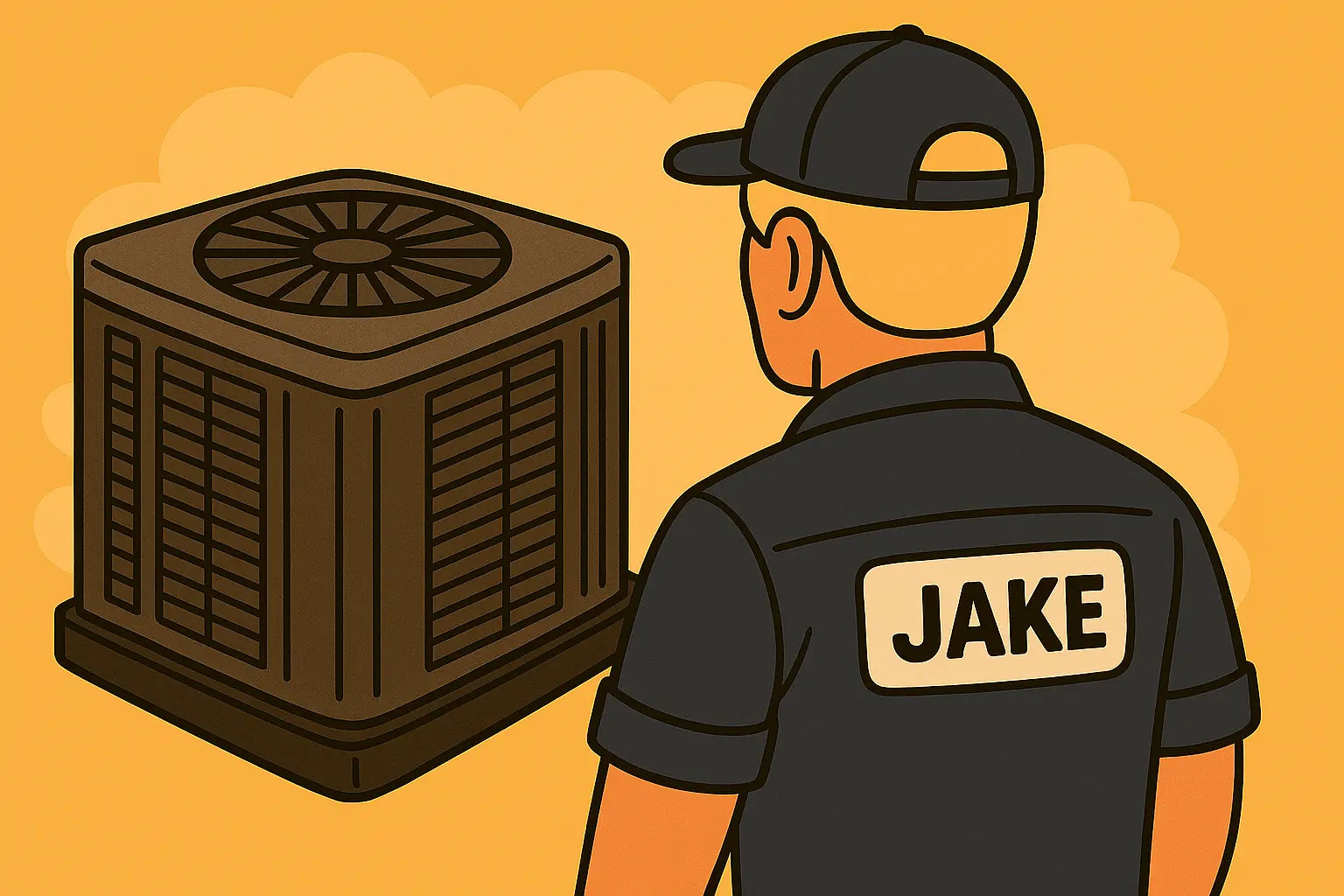Yo, It’s Jake 👋
Let’s talk about something that never gets enough love—ductwork. Yeah, those hidden tubes snaking through your attic or crawlspace like HVAC intestines 🐍. You might not see them, but they make or break your central air conditioner. Trust me—your AC could be brand new, top-of-the-line, 14.5 SEER2, R-32 coolness... and still fail miserably because your ductwork sucks (literally and figuratively).
This is Ductwork 101, where we break down how smart duct design keeps your AC humming and your energy bill from jumping off a cliff.
Why Ductwork Isn’t Just a “Set It and Forget It” Thing
You could have the best central AC unit money can buy, but if your ductwork is leaking air, undersized, or poorly laid out, it's like trying to drive a Ferrari on bald tires. Here's why it matters:
-
Airflow Resistance: Bad duct layout adds static pressure, which chokes your blower motor.
-
Hot/Cold Rooms: Inconsistent duct runs = uneven cooling and frustrated people.
-
System Strain: Undersized ducts overwork the system, shortening lifespan.
-
Skyrocketing Bills: Leaky or uninsulated ducts waste energy—up to 30%, according to the U.S. Department of Energy.
So yeah, ductwork ain’t background noise—it’s center stage. 🎤
The Big Offenders: What Bad Ductwork Looks Like
Here’s the rogues’ gallery of common ductwork fails:
-
Undersized Supply or Return Ducts: Like trying to breathe through a coffee straw ☕.
-
Long Runs with Too Many Bends: Every 90° turn adds resistance like speed bumps in a racetrack.
-
Disconnected or Unsealed Joints: Air leaking into your attic isn’t doing anyone any favors.
-
No Manual D (Design): If your contractor didn’t do a Manual D calculation, it’s guesswork—and guess what? Guesswork fails.
What “Good” Duct Design Looks Like 👇
A properly designed duct system does 3 things:
-
Balances Supply and Return: Equal pressure keeps air moving efficiently.
-
Minimizes Turns and Leaks: Less resistance = less work for your blower.
-
Sized for the System and Space: Not “close enough,” but exactly right.
This is where things like Manual J (load calculation) and Manual D come into play. If those weren’t part of your install—red flag alert. 🚩
Want a visual? The pros at HVAC School lay it out with diagrams and pressure loss curves that make you go, “Ahh, so that’s why my upstairs bedroom feels like a sauna.”
Signs Your Ductwork Is Sabotaging Your AC
If you’ve got these issues, your ducts might be the silent killer:
-
Rooms that are always warmer (or cooler) than the rest
-
AC runs nonstop but still can’t keep up
-
Whistling, hissing, or rattling noises
-
Weak airflow from vents
-
A blower motor that constantly burns out (yikes)
Take it from me—about 80% of the time someone says “my AC’s not working right,” the ductwork is to blame. Fix the ducts, and the system suddenly runs like a dream.
DIY Duct Inspection: Jake’s Backyard Checklist 🔧
Want to do a little detective work on your own system? Grab a flashlight and crawl around (carefully):
-
Check joints for gaps or tape peeling off.
-
Feel for air leaks—you’ll notice blowing around seams.
-
Look at flex ducts—are they crushed, kinked, or sagging?
-
Touch the ducts in hot zones—if they’re not insulated, you're losing cooling.
And yes, go ahead and slap on some mastic sealant or foil tape (NOT duct tape—seriously, that stuff dries out and fails fast).
Need more DIY pointers? This Old House has a solid step-by-step duct sealing guide even your cousin with two left thumbs could follow.
Should You Reroute or Replace Your Ductwork?
Sometimes, the only fix is starting fresh—especially in older homes where the ductwork was “kind of” designed back in the 70s. If your ducts are:
-
Crumbling
-
Way undersized
-
Running through unconditioned spaces with no insulation
-
Built for a furnace you replaced three units ago
…it might be time to invest in a full duct redesign. I know—it ain’t cheap. But it’s better than burning out two compressors and getting another “what’s the problem?” visit from your HVAC tech.
And don’t worry—your ducts don’t have to look like NASA built them. They just need to work like they were built by someone who gives a damn.
Bonus Tip: Consider Zoning 😎
If your house has big temp swings between upstairs and downstairs, zoning might be the ticket. Zoned systems use dampers to control airflow by room or level, giving you customized comfort and saving energy.
Learn more about zoning tech from Energy Vanguard’s in-depth post (spoiler: it’s amazing when done right, but easy to screw up).
Jake’s Final Word 💬
Ductwork is the hidden hero—or villain—of your central AC system. Don’t ignore it. Don’t assume it’s fine just because the house is newer. Even brand-new homes can have sloppy duct jobs rushed by builders.
If you’re shopping for a new AC system, pair it with a proper duct inspection. And if you want pre-matched systems that are actually designed to work well with modern airflow demands, check out
The Furnace Outlet’s Central Air Conditioning Systems.
Remember: your ducts are the lungs of your home. Keep ‘em clean, tight, and tuned, and your AC will thank you with cold air and low bills 😎
Need more advanced troubleshooting tips for your central AC? Visit my guide: Beat the Heat Breakdown.
Catch you in the next post, cool cats.
—Jake, your comfort loving tech!







